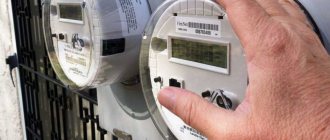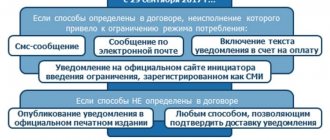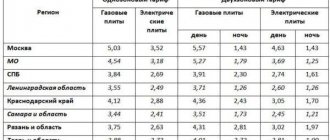The cost of electricity power is on average about 35% of your electricity costs
Despite this, few people fully understand what specific power we are talking about, how your power is measured and where the cost of electrical power comes from
In this guide we will cover:
- How much power are you paying for?
- Electricity power cost – calculation example – for 3 – 6 price categories
- Cost of electricity capacity - example of calculation for 1 price category
- Cost of electricity capacity for a two-rate tariff (price category 4 and 6)
- Why do you have to pay for power?
- How to reduce power consumption
- What types of electrical power are there?
How much power does your electricity bill refer to?
The cost of electrical power depends on
- purchased power purchased power is your electricity consumption during peak hours in your region. For example, the peak in your region would be from 9:00 to 10:00, your consumption from 9:00 to 10:00 is your purchased power. More details will follow.
- grid power or actual power is your maximum electricity consumption during peak hours. For example, peak hours in your region are from 9:00 to 21:00, your maximum consumption was from 17:00 to 18:00 - this is your network capacity. More details will follow.
If you have a single-rate tariff, then you are only interested in purchased power.
If you have a two-rate tariff, then the cost of electricity power for you is calculated using both network and purchased power.
Now let's look at some examples of how to calculate the cost of electricity capacity for your legal entity.
Volume of purchased power
Purchased power is the electricity consumption of your enterprise during peak load hours in your region (for your supplier of last resort).
Peak hours can be found on the website of the Trading System Administrator.
Let's say you determined that in February, peak hours in your region were 10:00 to 11:00 for the first 12 business days and 11:00 to 12:00 for the next 8 business days.
Next, we need – Hourly volumes of electrical energy (power) consumption kW*h – this is the hourly consumption of your enterprise for the month according to metering devices.
Here is an example of the hourly volumes of electrical energy consumption of our enterprise.
There were a total of 20 working days in February. The company worked from 8:00 am to 18:00 pm.
| Day | 8-9 | 9-10 | 10-11 | 11-12 | 12-13 | 13-14 | 14-15 | 15-16 | 16-17 | 17-18 |
| 1 | 1 900 | 2 200 | 2 201 | 2 222 | 1 800 | 2 110 | 2 209 | 2 050 | 2 107 | 2 214 |
| 2 | 1 930 | 2 280 | 2 281 | 2 302 | 1 880 | 2 190 | 2 299 | 2 330 | 2 187 | 2 294 |
| 3 | 1 880 | 2 205 | 2 206 | 2 227 | 1 805 | 2 115 | 2 283 | 2 055 | 2 112 | 2 219 |
| 4 | 1 901 | 2 201 | 2 202 | 2 223 | 1 801 | 2 111 | 2 210 | 2 051 | 2 108 | 2 215 |
| 5 | 1 931 | 2 281 | 2 282 | 2 303 | 1 881 | 2 191 | 2 300 | 2 331 | 2 188 | 2 295 |
| 6 | 1 881 | 2 206 | 2 207 | 2 228 | 1 806 | 2 116 | 2 284 | 2 056 | 2 113 | 2 220 |
| 7 | 1 902 | 2 202 | 2 203 | 2 224 | 1 802 | 2 112 | 2 211 | 2 052 | 2 109 | 2 216 |
| 8 | 1 932 | 2 282 | 2 283 | 2 304 | 1 882 | 2 192 | 2 301 | 2 332 | 2 189 | 2 296 |
| 9 | 1 882 | 2 207 | 2 208 | 2 229 | 1 807 | 2 117 | 2 285 | 2 432 | 2 114 | 2 221 |
| 10 | 1 903 | 2 203 | 2 204 | 2 225 | 1 803 | 2 113 | 2 290 | 2 053 | 2 110 | 2 217 |
| 11 | 1 933 | 2 283 | 2 284 | 2 305 | 1 883 | 2 193 | 2 380 | 2 800 | 2 190 | 2 297 |
| 12 | 1 883 | 2 208 | 2 209 | 2 230 | 1 808 | 2 118 | 2 600 | 2 525 | 2 115 | 2 222 |
| 13 | 1 904 | 2 204 | 2 205 | 2 226 | 1 804 | 2 114 | 2 213 | 2 054 | 2 111 | 2 218 |
| 14 | 1 934 | 2 284 | 2 285 | 2 406 | 1 884 | 2 194 | 2 303 | 2 334 | 2 191 | 2 298 |
| 15 | 1 884 | 2 209 | 2 410 | 2 331 | 1 809 | 2 119 | 2 287 | 2 059 | 2 116 | 2 223 |
| 16 | 1 905 | 2 395 | 2 206 | 2 227 | 1 805 | 2 115 | 2 214 | 2 055 | 2 112 | 2 219 |
| 17 | 1 935 | 2 475 | 2 286 | 2 307 | 1 885 | 2 195 | 2 304 | 2 335 | 2 192 | 2 299 |
| 18 | 1 885 | 2 200 | 2 211 | 2 232 | 1 810 | 2 120 | 2 288 | 2 060 | 2 117 | 2 224 |
| 19 | 1 906 | 2 206 | 2 207 | 2 228 | 1 806 | 2 116 | 2 215 | 2 056 | 2 113 | 2 220 |
| 20 | 1 936 | 2 286 | 2 287 | 2 308 | 1 886 | 2 196 | 2 305 | 2 336 | 2 193 | 2 300 |
Calculation of purchased power occurs as follows:
- We find the maximum consumption (power) for each working day during rush hour (marked in red).
- Let's sum up the power during rush hour.
- Divide the amount by the number of working days.
Purchased capacity = (2,201 + 2,281 + 2,206 + 2,202 + 2,282 + 2,207 + 2,203 + 2,283 + 2,208 + 2,204 + 2,284 + 2,209 + 2,226 + 2,406 + 2,331 + 2 227 + 2,307 + 2,232 + 2,228 + 2,308) / 20 = 2,252 kW
We have determined the volume of purchased capacity - 2,252 MW.
Now we need to determine the price of purchased power.
Purchase power price
The price of power is determined on the wholesale electricity market and depends on supply and demand.
It’s called the weighted average unregulated price for power on the wholesale market.
You can find the unregulated cost of power on the wholesale market on the website of your guaranteeing supplier.
Guarantee suppliers publish monthly the cost of purchased power on their website.
Let’s take, for example, the guaranteeing supplier LLC “RGMEK” and find a section for legal entities on its website and download prices for the month we are interested in.
On the website of RGMEC LLC, the file we are interested in, “Limit levels of unregulated prices for electrical energy (power)” for February 2020, is located in the Unregulated prices section.
And we see that the weighted average unregulated price for power on the wholesale market is 884,828.32 rubles per MW.
The final price of electricity power for our enterprise is equal to =
2.252 MW * 884,828.32 rubles = 1,992,633.3 rubles.
Electricity power tariff for the first price category
This calculation of the cost of electricity power is suitable for organizations that are in the first price category.
The cost of electricity capacity for the first price category is calculated by the supplier of last resort on a residual basis.
It happens like this:
- Based on its forecasts, the supplier of last resort buys power on the wholesale market.
- Most of the purchased capacity is resold to the population and legal entities that operate in the second to sixth categories.
- The difference (residual) between the capacity purchased on the wholesale market and supplied to the population and enterprises in 2-6 price categories falls into the accounts of legal entities in the first price category.
In other words, the better the guaranteed supplier plans, the less you pay.
The supplier of last resort independently calculates on a monthly basis the Power Payment Factor for consumers (buyers) making payments in the first price category.
We will reduce your energy costs by 5% - 30%
Find out in detail
You can find your power payment ratio on the website of the guaranteeing supplier in the section for legal entities in the file called “Limit levels of unregulated prices for electrical energy (power)…”.
For example, this guaranteeing supplier’s capacity costs 800 thousand rubles per MW.
During the year, the power payment coefficient ranges from 0.0014 to 0.00165 per MW.
Graph of changes in the power payment coefficient by consumers throughout the year:
In February, the consumer paid for power = 800 thousand rubles * 0.00165 = 1.32 thousand rubles
In March, the consumer paid for power = 800 thousand rubles * 0.0014 = 1.12 thousand rubles
Accordingly, in February the consumer overpaid 200 rubles per MW of capacity.
Incorrect metering circuits
In one of the phases of a 3-element counter, the direction of the current is opposite to the correct one
In this case, the meter takes into account 1/3 of the electrical energy consumption, and the amount of underaccounted electrical energy is determined by the formula:
| Wnd = 2 × Wexp(t), | (10) |
where Wexp(t) is the electricity consumption recorded by the meter for the billing period.
One of the phases of the 3-element meter is disconnected (voltage or current)
The amount of underaccounted electrical energy is half the consumption recorded by the meter:
| Wnd = 0.5 × Wexp(t). | (11) |
Two phases of a 3-element counter are disabled
The calculation is carried out in accordance with formula (10).
The common phase voltage is not supplied to the 2-element counter
The under-accounting is equal to the consumption recorded by the meter:
| Wnd = Wexp(t). | (12) |
Cost of electricity capacity for a two-rate tariff
To calculate the two-rate tariff for the transmission of electrical energy (relevant only for organizations in the 4th and 6th price categories), it is necessary to calculate the network capacity.
Network capacity (actual power) is your actual maximum power during peak hours.
Peak hours can be found on the system operator's website.
For example, peak hours for 2022 can be found at this link.
- Next, you need to select the month and your price zone:
- Central Russia is the first price zone.
- Siberia is the second price zone.
For example, let’s take the company “Crystal” LLC.
LLC “Crystal” is open from 8:00 am to 18:00 pm.
There were 20 working days in February.
Peak hours in February were from 8:00 am to 9:00 pm.
To calculate the cost of power, we need the hourly volume of electricity consumption for February.
Here is an example of the hourly volume of electrical energy consumption in kWh at Kristal LLC for February on weekdays:
| Day | 8-9 | 9-10 | 10-11 | 11-12 | 12-13 | 13-14 | 14-15 | 15-16 | 16-17 | 17-18 |
| 1 | 1 900 | 2 200 | 2 201 | 2 222 | 1 800 | 2 110 | 2 209 | 2 050 | 2 107 | 2 214 |
| 2 | 1 930 | 2 280 | 2 281 | 2 302 | 1 880 | 2 190 | 2 299 | 2 330 | 2 187 | 2 294 |
| 3 | 1 880 | 2 205 | 2 206 | 2 227 | 1 805 | 2 115 | 2 283 | 2 055 | 2 112 | 2 219 |
| 4 | 1 901 | 2 201 | 2 202 | 2 223 | 1 801 | 2 111 | 2 210 | 2 051 | 2 108 | 2 215 |
| 5 | 1 931 | 2 281 | 2 282 | 2 303 | 1 881 | 2 191 | 2 300 | 2 331 | 2 188 | 2 295 |
| 6 | 1 881 | 2 206 | 2 207 | 2 228 | 1 806 | 2 116 | 2 284 | 2 056 | 2 113 | 2 220 |
| 7 | 1 902 | 2 202 | 2 203 | 2 224 | 1 802 | 2 112 | 2 211 | 2 052 | 2 109 | 2 216 |
| 8 | 1 932 | 2 282 | 2 283 | 2 304 | 1 882 | 2 192 | 2 301 | 2 332 | 2 189 | 2 296 |
| 9 | 1 882 | 2 207 | 2 208 | 2 229 | 1 807 | 2 117 | 2 285 | 2 432 | 2 114 | 2 221 |
| 10 | 1 903 | 2 203 | 2 204 | 2 225 | 1 803 | 2 113 | 2 290 | 2 053 | 2 110 | 2 217 |
| 11 | 1 933 | 2 283 | 2 284 | 2 305 | 1 883 | 2 193 | 2 380 | 2 800 | 2 190 | 2 297 |
| 12 | 1 883 | 2 208 | 2 209 | 2 230 | 1 808 | 2 118 | 2 600 | 2 525 | 2 115 | 2 222 |
| 13 | 1 904 | 2 204 | 2 205 | 2 226 | 1 804 | 2 114 | 2 213 | 2 054 | 2 111 | 2 218 |
| 14 | 1 934 | 2 284 | 2 285 | 2 406 | 1 884 | 2 194 | 2 303 | 2 334 | 2 191 | 2 298 |
| 15 | 1 884 | 2 209 | 2 410 | 2 331 | 1 809 | 2 119 | 2 287 | 2 059 | 2 116 | 2 223 |
| 16 | 1 905 | 2 395 | 2 206 | 2 227 | 1 805 | 2 115 | 2 214 | 2 055 | 2 112 | 2 219 |
| 17 | 1 935 | 2 475 | 2 286 | 2 307 | 1 885 | 2 195 | 2 304 | 2 335 | 2 192 | 2 299 |
| 18 | 1 885 | 2 200 | 2 211 | 2 232 | 1 810 | 2 120 | 2 288 | 2 060 | 2 117 | 2 224 |
| 19 | 1 906 | 2 206 | 2 207 | 2 228 | 1 806 | 2 116 | 2 215 | 2 056 | 2 113 | 2 220 |
| 20 | 1 936 | 2 286 | 2 287 | 2 308 | 1 886 | 2 196 | 2 305 | 2 336 | 2 193 | 2 300 |
Network power is calculated as follows:
- We find the maximum consumption (power) for each working day (marked in red).
- Let's sum up the maximum power.
- Divide the amount by the number of working days.
Network capacity of Kristal LLC = ( 2,222 + 2,330 + 2,283 + 2,223 + 2,331 + 2,284 + 2,224 + 2,332 + 2,432 + 2,290 + 2,800 + 2,600 + 2,226 + 2,406 + 2,410 + 2,395 + 2,475 + 2,288 + 2,228 + 2,336) / 20 = 2,356 kWh
By summing up the hourly volume of consumption, we obtain the volume of consumption for the month.
For Kristal LLC, electricity consumption in February is 430.663 MWh.
Next, on the website of the tariff service in your region or on the website of the guaranteeing supplier (section for legal entities), we find a document called “Resolution on the establishment of uniform (boiler) tariffs for services for the transmission of electrical energy in the territory...” for the year of interest to us.
In the resolution we find a two-rate tariff for electric energy transmission services.
For Kristal LLC, the two-part tariff looks like this:
- Two-rate tariff - the rate for payment of technological costs (losses) in electric networks is 350 rubles / MWh Two-rate tariff - the rate for the maintenance of electric networks is 950 rubles / kWh
Cost of electricity transmission services for February for Kristal LLC =
2,356 kWh * 950 rub/kWh + 430.663 MWh * 350 rub/MWh = 2,388.9 thousand rubles
Total power in W: how much energy do household appliances consume in kW
Any apartment is equipped with the necessary set of household appliances and electrical equipment. Each type of equipment has individual technical characteristics, including power and energy consumption. The total value of all these factors determines the total amount of electrical energy consumed, which will be different for each family.
Distribution of energy consumption by electrical appliances as a percentage
In order to plan possible expenses, some owners resort to compiling a table of electricity consumption by household appliances per hour, where they indicate the name of the consumer, its power and duration of operation throughout the day. Information about the total energy consumption of household appliances and lighting elements is necessary for installing switching and protective equipment and selecting the cross-section of electrical wiring.
Note! To determine the total power, the corresponding consumer values must be converted into one unit of measurement, so it is important to know how many W are in 1 kW.
From the table below you can conclude which household appliances consume more electricity. These include a lighting system, refrigerator, TV, computer, washing machine, electric kettle and iron. The total value averages 120-180 kW per month. Additional costs include the use of small household appliances in the form of a hair dryer, coffee maker, food processor, chargers and other elements that provide the required level of comfort. In the summer, the use of air conditioning is also taken into account, and in winter - oil electric heaters, which add 60-100 kW.
Energy consumption table for household appliances
For each home, the number of electrical devices, the value of their electricity consumption and the duration of operation will be different. The table below for energy consumption of household appliances contains average information:
| Device name | power, kWt | Operating time per day, h | Consumption per day, kWh | Consumption per month, kWh |
| Fridge | 0,15-0,6 | 24 | 3,6-8,6 | 10,8-25,8 |
| Lighting (10 lamps 20 W each) | 0,020 | 5 | 0,1 | 3 |
| Washing machine | 1-2,2 | 1 | 1-2,2 | 20-30 |
| Vacuum cleaner | 0,65-2,2 | 15 minutes | 0,16-0,55 | 1,6-5,5 |
| TV | 0,1-0,3 | 5 | 0,5-1,5 | 15-30 |
| Microwave | 1,5 | 30 minutes | 0,75 | 10-15 |
| Electric kettle | 0,7-3 | 15 minutes | 0,25-0,75 | 7,5-16,5 |
| Computer | 0,1-0,2 | 5 | 0,5-1 | 7-20 |
| Iron | 1,1 | 15 | 0,3 | 5-8 |
| Dishwasher | 0,5-2,8 | 1 | 0,5-2,8 | 7,5-15 |
| Multicooker | 0,2-2,4 | 1 | 0,2-2,4 | 2-24 |
| Food processor | 0,2-2,0 | 15 minutes | 0,05-0,5 | 0,5-3 |
| Air conditioner | 0,7-1,3 | 7 | 3,5-8 | 15-35 |
| Hairdryer | 1,2-1,5 | 15 minutes | 0,3-0,4 | 5-7 |
| Heater | 1,5 | 5 | 7,5 | 75 |
| Electric stove | 2-8,5 | 3 | 5-10 | 30-150 |
| Coffee maker | 1,5-3,5 | 15 minutes | 0,3-0,8 | 5-10 |
| Hood | 0,1-0,5 | 3 | 0,3-1,5 | 3-4,5 |
Refrigerator: how many watts does it consume per hour?
When answering the question of which electrical appliances consume the most energy, the refrigerator will be first on the list. This device works around the clock. The actual energy consumption of the refrigerator is calculated taking into account the international classification of energy efficiency devices. This parameter is designated by a letter with a certain number of pluses; the more there are, the lower the level of electricity use.
The classification of a household appliance by energy efficiency is as follows:
- A++ - the highest class with maximum energy saving. Electricity consumption is 30% of the standard value;
- A+ - energy consumption - 30-42% of the standard;
- A - energy consumption - 42-55% of the standard;
- B - energy consumption - 55-75% of the standard;
- C – energy consumption – 75-90% of the standard;
- D – energy consumption – 90-100% of the standard;
- E - energy consumption - 100-110% of the standard;
- F - energy consumption - 110-125% of the standard.
However, the energy efficiency parameter is very average. Since the amount of electricity consumed by the refrigerator is affected by its operating mode, workload, and the number of door openings.
The refrigerator consumes the most energy of any electrical appliance.
Note! The instructions for the refrigerator indicate the energy efficiency class and the amount of electricity it consumes per hour.
Annual energy consumption corresponds to 220-460 kW. It is impossible to obtain an accurate result for a table of electricity consumption per day or month by simply dividing this value. Since energy consumption is influenced by a number of factors, such as freezing power, ambient temperature, and product filling level.
To reduce the energy consumption of the refrigerator, it is necessary to operate the device correctly, do not leave the internal space empty when it is turned on, do not open the door for a long time, do not put hot food in, check the condition of the seals, ensure that there is a gap between the refrigerator and the wall, regularly defrost, wash and dry the unit.
How to calculate your TV's electricity consumption
A TV is an essential element of household appliances in every home. Often, owners install several copies for each room. Devices can be of several types: cathode ray tube models, LED, LSD or plasma TVs. The power consumption of a device is affected by its type, screen size, color, brightness, white and black balance, active operation time, and duration of sleep mode. Based on the table of electricity consumption by household appliances, a TV uses an average of 0.1-0.3 kW.
Electrical energy consumption will depend on the type and mode of operation of the TV.
The power of TVs in Watts with a cathode ray tube is 60-100 W per hour. On average he can work about 5 hours a day. Monthly consumption reaches 15 kW. This is how much electricity will be spent on its active operation. The TV also consumes 2-3 watts per hour in standby mode when plugged in. Total energy consumption can be 16.5-17.5 kW per month.
The energy consumption of LED or LSD models directly depends on the screen size. For example, an LSD TV with a 32-inch screen diagonal will consume 45-55 W per hour in operating mode, and 1 W in standby mode. The total electricity consumption per month is 6.7-9 kW. LED models consume on average 35-40% less electrical energy. In active mode, a 42-inch TV will use 80-100 W, in sleep mode - 0.3 W. Total consumption per month will be 15-20 kW.
Plasma TVs have good color reproduction. The TV power in kW is 0.15-0.19 in active mode, and 120 W/day in sleep mode. The total consumption per month can be 30-35 kW. To save energy, you should remove the plug from the socket, correctly adjust the brightness level depending on the time of day, and set the timer to automatically turn off.
Washing machine operation: how many kilowatts does the device consume?
To calculate how many watts a washing machine spends on one wash cycle follows from the calculation of its brand, model and technical characteristics. Energy is spent on the operation of the electric motor, which can be in the range of 400-800 W, heating element - 2 kW, pump for draining water - 40 W, control system in standby mode - 3-10 W. This indicator directly depends on power consumption.
The higher the temperature the washing mode provides, the higher the energy consumption will be.
The washing mode also affects the total consumption. The lower the water temperature, device operating time and speed, the less electricity the machine will consume. Washing machines have an energy consumption class, which determines the required amount of electricity:
- class A+ - energy consumption 0.17 kWh;
- class A – 0.17-0.19 kWh;
- class B – 0.19-0.23 kWh;
- class C – 0.23-0.27 kWh;
- class D – 0.27-0.31 kWh;
- class E – 0.31-0.35 kWh;
- class F – 0.35-0.39 kWh;
- class G – more than 0.39 kWh.
Based on the class, model, mode, load and water temperature, the machine consumes 300-1600 Wh per washing cycle.
In order to reduce the amount of electricity consumed, it is necessary to choose the optimal mode, which will depend on the degree of soiling of the laundry and its composition. A significant part of the electricity is spent on heating water and spinning. The machine should be fully loaded, since the units cannot determine the relationship between the amount of laundry and the value of electricity consumption per cycle. The machine should be cleaned at least once every six months using special products.
Many washing machine models have water and energy saving modes
Electricity consumption of an electric stove
Electric stoves are very popular among consumers. The amount of electricity consumed by a device is affected by the type of hob, which can be induction or heating element, the diameter of the burners, the power and functionality of the device.
Note! An induction surface consumes less electricity compared to an electric one.
The power of a household appliance directly depends on the number of burners and their diameter, which can be 14.5; 18 and 20. Accordingly, energy consumption is 1; 1.5 and 2 kW.
The oven power corresponds to 1.8-4 kW. The minimum energy consumption with one operating burner is 1 kW. The maximum power of an electric stove is calculated taking into account the number of simultaneously operating burners and the operating mode of the oven. It can be 5-8.5 kW, as can be seen from the table of the power of household appliances and their energy consumption.
To save energy when operating an electric stove, you should follow some recommendations:
- it is necessary to choose the correct diameter of the pan for a specific burner;
- It is better to use dishes with a flat bottom;
- To save heat loss, the pan should be covered with a lid.
By following simple cooking rules, you can save energy consumption on an electric stove.
How much does an electric boiler consume?
Electric boilers are installed in houses for heating and water heating. However, the simplicity of the design and ease of operation hides high energy consumption. Models of electric boilers differ in power, design, number of circuits and method of heating the coolant (heating elements, electrode or induction heating). Double-circuit boilers are used for heating and water heating. Boiler models are more economical than flow-through ones.
The choice of boiler is made on the basis of the required power that it must have to ensure heating of premises of a given area. When calculating, it should be taken into account that kW is the minimum power of the device required to heat 10 sq.m. of room area. Additionally, climatic conditions, the presence of additional insulation, the condition of doors, windows, floors and the presence of cracks in them, and the thermal conductivity of walls are taken into account.
Important! The final power of an electric boiler is influenced by the method of heating the coolant, while electrode devices are able to heat a large area while consuming less electricity.
To determine the electricity consumption of an electric boiler, it is necessary to calculate its operating mode. It should be borne in mind that the device will operate at full capacity for half the season. The duration of its operation per day is taken into account. Thus, to determine the total electricity consumption per day, it is necessary to multiply the number of hours by the power of the device.
Double-circuit boilers consume electricity in both winter and summer
To reduce the cost of energy consumption of the boiler, you should install a two-phase meter, according to which electricity is calculated at night at a reduced tariff. It will also save money by using an automatic control device for electrical appliances, which will control the operation of the device based on the time of day.
Air conditioner power consumption
The electricity consumption of an air conditioner directly depends on its operating mode. The device converts temperature using a heat pump, the operation of which is ensured by pumping a coolant, freon, with a compressor and changing the pressure in the lines. The coolant, depending on its operating mode (cooling or heating), passes from liquid to gaseous state in the outdoor or indoor unit.
The device goes into standby mode after reaching the set temperature. When it goes beyond the established standards, the air conditioner starts working again. The split system operates periodically, without consuming electricity in standby mode. Most of the energy is spent on operating the compressor and then the fan.
The air conditioner is selected based on its heating output, which is calculated in British thermal units. Converted to kilowatts, the following values are obtained:
- 7 – 2 kW;
- 9 – 2.5 kW;
- 12 – 3.5 kW;
- 18 – 5 kW.
The amount of energy consumed by the air conditioner will depend on the time of year and room temperature
Helpful advice! To select an air conditioner based on heat output, you need to divide the area of the room by 10.
Thermal power should not be confused with electrical power. To calculate electricity consumption per hour, you should divide the cooling capacity by 3. As the above table of power consumption of household electrical appliances suggests, air conditioners consume 0.7-1.3 kW per hour of active operation, which depends on the type of compressor.
Related article:
Motion sensors for turning on lights: a sure way to save energy
Device characteristics. Varieties of devices according to different criteria. Sensor installation algorithm. Popular models. Lamp with DD.
How much electricity does a kettle consume?
An electric kettle is a convenient household appliance that can provide its owners with boiling water in a matter of minutes.
It is necessary to calculate how many kilowatts a kettle consumes, taking into account the power of the device and the maximum volume of liquid that it can bring to a boil. The larger the displacement of the device, the more time it will take to heat the water, and accordingly the amount of electricity consumed increases. On the other hand, the high power of the kettle contributes to its fast operation. However, it requires a sufficient amount of electricity.
All electric kettles are different in their parameters and, accordingly, in their level of energy consumption
To calculate how much a kettle consumes, you should perform the following calculations:
- The power of the device is taken from the passport;
- the time it takes to boil water in the kettle is calculated;
- electricity consumption per unit time is determined;
- the resulting value should be multiplied by the number of times the water is boiled;
- monthly electricity consumption is determined.
Based on the table, the power of the electrical appliance is in the range of 700-3000 W, which depends on the volume of the bowl, body material, displacement, type of heating element, and chemical composition of the water. The heating element can be open (spiral) or closed (plate) type. The first option provides a high rate of water heating and, accordingly, uses less energy.
The energy consumption of the device is also influenced by the housing material. In a metal bowl, water heats up faster. However, an additional amount of electricity is spent on heating the case. Glass also heats up quickly, but retains heat less well. Ceramic has a slow heating rate, but the water in the kettle will remain hot for a long time.
Important! Boiling water in an electric kettle is less expensive than using an electric stove.
If you pour a minimum amount of water into the kettle without a reserve, you can reduce the waste of both water and electricity
To reduce the kettle's energy consumption, unplug the appliance from the outlet when not in use. The required volume of water should be poured into it, without reserve. You should monitor the condition of the heating element by regularly descaling it.
Why do you have to pay for power?
The cost of electrical power is the cost of maintaining generating equipment, which must be constantly ready to generate the electrical energy you need.
Generating companies operate at full capacity only during peak hours.
The rest of the time, most power plants are in standby mode.
The sale of capacity allows for the maintenance of existing generating equipment on standby, as well as for investment in new power plants and infrastructure.
Payment for power provides a 100% guarantee of uninterrupted supply of electricity.
Also, paying for capacity smooths out electricity prices.
Without capacity charges, the cost of electricity would skyrocket during peak hours and drop to a trickle at night.
Calculation formula
In order to exclude illegal consumption from your own electrical network, take into account and determine the exact consumption and possibly limit consumption, it is necessary that individual housing be equipped with special electricity meters. In this case, the formula for calculating the consumed resource will be as follows:
- The consumer takes readings on the display. If it has two separate displays, then you need to take 2 readings, for night and daytime.
- Then the readings for the previous month are subtracted from the current figure.
- The final number is an indicator of the power in kilowatt hours that was consumed by the household in 1 month.
- To pay for the service, this number is multiplied by the cost of electricity 1 kW hour. Keep in mind that tariffs for this resource differ in each region; for example, in the Tula region and the Yamal-Nenets Autonomous Okrug they will be different. The final amount is the number of rubles that must be transferred to the account of the organization supplying energy resources. This is done to pay for housing and communal services.
- If this meter does not exist, then, for example, electricity consumption by power can be calculated by multiplying the power of the device by the amount of time it operates. But, since it is not possible for the state to control electricity consumption in this way, average indicators are used.
How to reduce power consumption
In order to reduce the cost of electricity power, it is necessary to reduce electricity consumption during peak hours.
Not everyone has the opportunity to reduce electricity consumption during peak hours.
But those organizations that have such an opportunity must definitely consider the following options for reducing electricity consumption during peak hours:
- Transition to a two or three shift work schedule
- Shifting the work schedule so that the peak electricity consumption at the enterprise does not coincide with peak hours.
- Disabling non-essential and background equipment during peak hours. For example, turning off the air conditioning system, chillers, refrigerators, heaters, etc. during peak hours - for example, from 9 to 10 and from 19 to 21.
- Transferring the most energy-intensive processes to a night work schedule.
If you use other options to reduce power consumption during peak hours, we would be grateful if you share them in the comments.
Now let's look at the output of electrical power.
We will reduce your energy costs by 5% - 30%
Standards
According to the standards, the following resource consumption figures are given for one person living in housing:
- In Moscow, if you have a gas stove, the norm is 50 kilowatt-hours. If it is not there, the number increases to 80.
- In St. Petersburg these figures are 78 and 111, respectively.
- In Chelyabinsk 100 and 180.
These values are established exclusively in each region and are regulated by local governments. They are necessary in order to reduce household expenses and increase the responsibility of management companies. The indicated figures will calculate the amount that is necessary to satisfy the minimum needs of a person. Naturally, non-contractual electricity consumption is unprofitable, first of all, for the consumer himself.
Sometimes they install devices that take into account general household consumption, but it is still more convenient to plan electricity consumption with a personal meter. As for unauthorized selection, this action will entail criminal liability.
Types of electrical power
There are about ten different powers that you, one way or another, have encountered.
In order to figure this out, let's look at what types of electrical power exist and which of these powers is used to calculate the cost of electricity:
- Connected power
- Maximum power
- Declared power
- Instantaneous electrical power
- Network power / Actual power
- Reserved power
- Purchased power
Electrical appliance utilization (load) factor
Such uneven consumption is taken into account by a specialized parameter - the utilization (load) factor, defined as the ratio of actual power to nominal power. To take it into account in the calculation, it is enough to multiply the rated power of the power receiver by the specified coefficient.
The utilization rates for a number of household electrical appliances are shown in the table below.
| Energy receiving devices | Coefficient use |
| Lighting | 0,7 |
| TV | 0,7 |
| Consumer electronics | 0,2 |
| Fridge | 0,8 |
| Dishwasher | 0,1 |
| Washing machine | 0,1 |
| Iron | 0,1 |
| Vacuum cleaner | 0,1 |
| Boiler | 0,2 |
| Electric heater | 0,5 |
Connected power
Connected power is the sum of the rated powers of transformers and consumer electricity receivers connected to the electrical network (GOST 19431-84 Energy and electrification terms and definitions).
For example, a consumer substation with a capacity of 100 kVA is connected to a transformer substation.
The total connected power of the consumer is S = 100 kVA
Machine tools, lighting systems, and electrical appliances are connected to the same TP.
The power of all these receivers is calculated by the active component.
Then, the active connected power is, for example, P = 80 kW.
Maximum power
Maximum power is the maximum that can be used simultaneously by all consumer power-receiving devices.
In simple words, we will get maximum power when we turn on all the equipment to its fullest.
The maximum should be less than or equal to the connected power.
More details about the maximum power can be found in Government Resolution No. 861 of December 27, 2004 “On approval of the Rules for non-discriminatory access to electric energy transmission services.”
Network power / Actual power
There are two concepts - network power and actual power, which essentially mean the same thing.
The only difference is that
- the actual power is used to calculate the reserved power, and
- network capacity is used to calculate the cost of electricity transmission services at a two-rate tariff.
The volume of network power (actual power) is determined as the monthly average of the enterprise’s maximum consumption values during peak hours.
For a general understanding, let's look at a simplified example of calculating actual power (step-by-step calculation at this link).
And so, we take the peak load hours of your region, as a rule, they fall between 8:00 am and 21:00 pm.
We take the hourly consumption of the enterprise for the first working day of the month during peak load hours, that is, from 8:00 am to 21:00 pm.
Let's say the maximum consumption at your enterprise was from 10:00 to 11:00 and was 150 kWh.
Accordingly, the network power (actual power) for the first day is 150 kW.
In the same way, we find the network capacity for each working day per month.
We sum up the network capacity for the month and divide by the number of working days of the month.
Network power (Actual power) = sum of maximum power by working days / number of working days
Comparison and dynamics
If we talk about global indicators, the statistics look like this:
- In 1890, 9 billion kWh were generated.
- In 1950, the figure increased more than 100 times and amounted to 950 billion kWh.
- In 1980, it again increased almost 100 times and amounted to 8.250 billion kWh.
- In 2000, the amount of electricity generated by the total capacity of all enterprises reached 14,500 billion kWh.
- By 2013 it was already at the level of 23127 billion kilowatt-hours.
- And by 2016, 24.816 billion kilowatt-hours.
As you can see, the resource has only increased, since the demand for it is actually increasing all the time.











